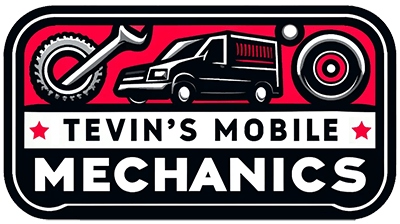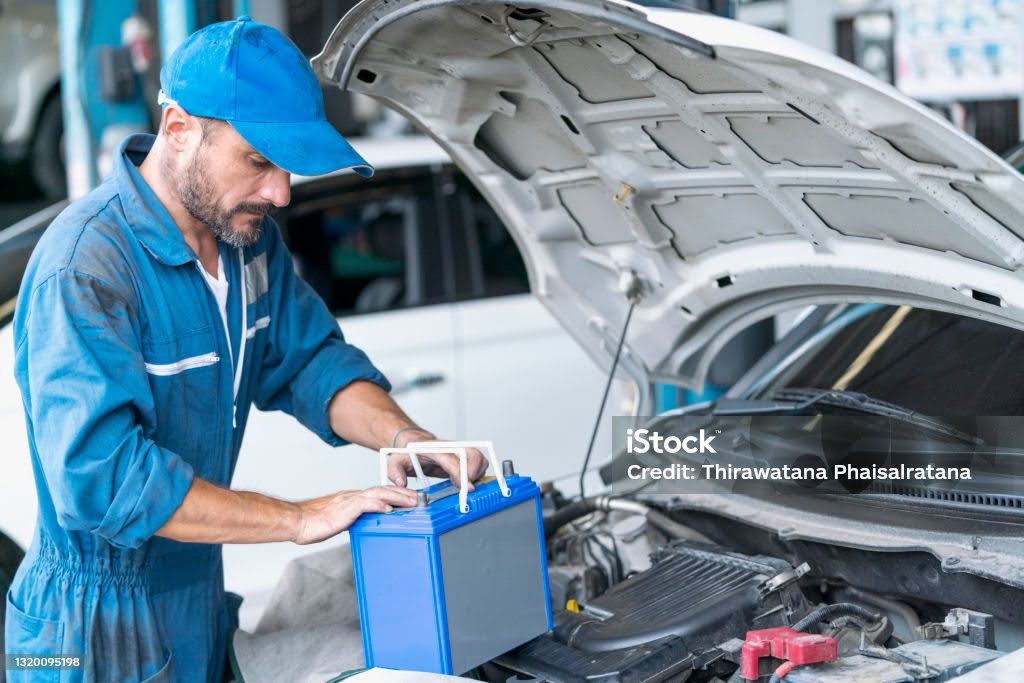Is your car battery dead? If you find yourself stranded on the side of the road, don’t worry—Tevins Mobile Mechanic is here to help you get back on track. As the temperature drops and night approaches, knowing how to handle a dead car battery becomes essential for every driver in Jacksonville.
This guide will cover the signs of a dead car battery, the possible causes, and how to fix the issue, all while highlighting the convenience of choosing Tevins Mobile Mechanic for your automotive needs.
Signs of a Dead Car Battery
Recognizing the signs of a weak or dead car battery is the first step in addressing the problem. Look out for the following indicators:
- The engine struggles to start or fails to start altogether
- Dimming headlights and interior lights
- Electrical systems malfunctioning (e.g., power windows, radio, etc.)
- The battery warning light illuminated on the dashboard
- A swollen battery case
- A rotten egg smell (sulfuric acid)
If you notice any of these symptoms, it’s important to have your battery tested as soon as possible.
Possible Causes of a Dead Car Battery
A variety of factors can contribute to a dead battery:
- Age: Car batteries typically last between 3 to 5 years. As they age, their ability to hold a charge diminishes, leading to difficulties starting the engine.
- Extreme Temperatures: Both high and low temperatures can adversely affect battery performance. Hot weather can evaporate the battery’s electrolyte, while cold weather can slow chemical reactions, making it harder to start your vehicle.
- Parasitic Drain: This occurs when electrical devices draw power from the battery even when the engine is off. Faulty wiring or leaving accessories on can lead to complete battery drain.
- Frequent Short Trips: If you frequently take short trips, your alternator may not have enough time to recharge the battery fully, leading to a dead battery over time.
- Corroded Battery Terminals: Corrosion can impede electrical flow between the battery and the car’s electrical system, causing starting issues.
- Alternator Problems: If your alternator isn’t functioning properly, it won’t recharge the battery, leading to power loss.
How to Jumpstart a Dead Battery
If your battery is dead, jumpstarting is a quick way to get your vehicle running again. Here’s how you can do it safely:
- Find another vehicle with a fully charged battery and park it close to yours, ensuring both engines are turned off.
- Identify the positive (+) and negative (-) terminals on both batteries.
- Connect one end of a red jumper cable to the dead battery’s positive terminal and the other end to the charged battery’s positive terminal.
- Connect one end of a black jumper cable to the charged battery’s negative terminal and the other end to an unpainted metal surface on the engine block of the dead car (not the negative terminal).
- Start the engine of the car with the charged battery and let it run for a few minutes.
- Attempt to start your car. If it starts, let it run for at least 15-20 minutes to recharge the dead battery.
Always prioritize safety by wearing gloves and eye protection during this process.
Charging a Dead Car Battery
If jumpstarting doesn’t work, your battery may need a full charge. Here’s how to charge it:
- Remove the battery from your vehicle, ensuring the engine is off and the ignition key is removed.
- Clean the terminals with a mixture of baking soda and water to remove any corrosion.
- Follow your battery charger’s instructions for the appropriate voltage and amperage settings.
- Connect the charger’s positive cable to the positive terminal and the negative cable to the negative terminal.
- Plug in the charger and turn it on, monitoring the charging process closely.
- Once fully charged, disconnect the charger and reinstall the battery.
Replacing a Dead Car Battery
If your battery still won’t hold a charge, it’s time for a replacement. Follow these steps:
- Purchase a new battery compatible with your vehicle by checking your owner’s manual.
- Remove the old battery by disconnecting the negative cable first, then the positive cable.
- Clean the battery tray and terminals using a baking soda and water mixture.
- Install the new battery by connecting the positive cable first, followed by the negative cable.
- Dispose of the old battery responsibly at an auto parts store or recycling center.
Testing Your Car Battery
To assess your battery’s health, you can use a multimeter:
- Park the vehicle on a level surface and turn off the engine.
- Set the multimeter to the DC voltage setting (20V or higher).
- Connect the red probe to the positive terminal and the black probe to the negative terminal.
- A fully charged battery should read around 12.6 volts or higher. If it reads below 12.4 volts, it may need charging or could be nearing the end of its life.
Preventing Dead Car Batteries
To avoid future battery issues, consider these preventive measures:
- Regularly inspect your battery for corrosion or leaks.
- Clean the terminals periodically.
- Test your battery’s voltage at least twice a year.
- Avoid frequent short trips that don’t allow the alternator to recharge the battery fully.
- Replace your battery every 3-5 years, depending on its performance.
Choosing the Right Car Battery
When selecting a new battery, keep the following tips in mind:
- Consult Your Owner’s Manual: It contains vital information about battery compatibility.
- Determine the Size: Ensure the battery fits properly in your vehicle.
- Consider CCA and CA Ratings: Choose a battery with a good Cold Cranking Amps rating for your climate.
- Evaluate Reserve Capacity: A higher RC rating means longer support for electrical systems.
- Choose the Right Type: Consider options like flooded, AGM, or lithium-ion batteries based on your needs.
- Check the Warranty: A good warranty indicates quality and reliability.
- Opt for Reputable Brands: Brands like Optima and Interstate are known for their reliability.
Choosing Tevins Mobile Mechanic for Battery Services
If you’re unsure about replacing your battery yourself, consider calling Tevins Mobile Mechanic. We offer on-site battery replacement services throughout Jacksonville, ensuring you can get back on the road quickly and efficiently. Our experienced technicians can handle the job with ease, saving you time and hassle.
Final Thoughts
Understanding how to manage a dead car battery can save you from unnecessary stress and expenses. By recognizing the signs, knowing the causes, and learning how to jumpstart, charge, or replace a battery, you’ll be better equipped to tackle this common issue. For professional assistance, reach out to Tevins Mobile Mechanic in Jacksonville—we’re here to help you every step of the way!

